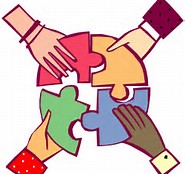Below is an outline of our forthcoming book, Healing Our Social Brain. If you would like to provide feedback on the manuscript-in-progress, please notify us through the Contact Us page.
Healing Our Social Brain:
The Neuroscience of Stress, Social Disconnection, and how Personal and Social Healing can restore our Loving Connections
by Barbara Allys Brandt, for Healing Our Connections, Healing Ourselves (the HCHO Project)
Overview
Introduction: Love, Social Disconnection, and brain science: Why we need both personal and societal healing
Part I. Our Social Brain: We are wired for love, wired for connecting
Part II. We are also wired to protect ourselves:
How Stress changes our Social Brain
Part III. Too much protection prevents love: Stuck in Chronic-Stress-and-Social-Disconnection Syndrome (CSSD) and the DIRE-paradigm
Part IV. Transforming the state of our brain and body: Healing our physiology (The First Intervention Point of Social Brain Healing)
Part V. Transforming the stories in our brain: Opening to new possibilities (The Second Intervention Point of Social Brain Healing)
Part VI. Transforming our experiences of Social Disconnection: Changing our relationships (The Third Intervention Point of Social Brain Healing)
Part VII. A mini-guide for doing Social Brain Healing--for personal or larger societal recovery
Appendix A: Resource List of organizations, publications, and other contacts for doing Social Brain Healing
A Brief Summary of the Book
Part I, “Our Social Brain: We are wired for love, wired for connecting” describes the latest research about our innate abilities for loving connection. It describes how the stories in our brain about Social Connection and Disconnection influence our beliefs and relationships; goes back in history to explore why we are hardwired to connect lovingly to oneself, to other individuals, to a community (or multiple communities), and to Nature; and summarizes the extensive scientific evidence about the many ways in which we are hardwired from birth—through our brain, nervous system, and hormonal chemistry—to create these loving connections.
Part II, “We are also wired to protect ourselves: How Stress changes our Social Brain” explores the painful paradoxes of protection. It describes how our Stress Response—which gives us specialized abilities to help us protect ourself from danger in an emergency—can take over, creating ongoing limitations and distortions within us. It explains why "a little bit of stress is good for you," and how some types of stress can actually improve our performance and cause us to bond more strongly with other people. It also explains how Chronic Stress and our full-scale Fight-or-Flight Stress Response limit and distort us pysically, mentally, emotionally, and behaviorally, changing our perceptions of the world and our ways of relating to other people by generating polarized divisions and One-Up/One-Down hierarchical relationships that start as physical patterns within our own body—patterns which can then expand to distort not only our individual relationships, but entire societies and cutures.
Part III, “Too much protection prevents love: Stuck in Chronic-Stress-and-Social-Disconnection Syndrome (CSSD) and the DIRE-Paradigm” explores how the innate protective patterns of our Stress Response can expand to influence, shape, and distort our larger social relationships and cultural beliefs, generating the “DIRE-paradigm,” a personal and cultural worldview characterized by polarized divisions, hierarchies of domination/subjugation, and rigid roles and limited possibilities for all of us. It provides historical speculations on why we evolved from egalitarian bands of hunters-gatherers to societies and cultures shaped by ongoing social divisions and unjust systems of stratification; describes how the beliefs, values, and relationships of the DIRE-paradigm shape numerous aspects of our lives today; how this paradigm is especially powerful in fundamentalist religions and authoritarian societies; how people concerned about threats and danger join together in Communities of Protection, which may be either beneficial or harmful; how the DIRE-paradigm keeps us under stress and causes patterns of Social Disconnection in a self-sustaining Vicious Cycle; and how we can recover from this Vicious Cycle of Chronic-Stress-and-Social-Disconnection through the 3 Intervention Points of Social Brain Healing.
Part IV, "Transforming the state of our brain and body: Healing our physiology (The First Intervention Point of Social Brain Healing)"; Part V," Transforming the stories in our brain: Opening to new possibilities (The Second Intervention Point of Social Brain Healing)"; and Part VI, "Transforming our experiences of Social Disconnection: Changing our relationships (The Third Intervention Point of Social Brain Healing)" explore how our innate potentials for love, healing, and creative growth also begin within our own mind-body system; explains that our brain also has the innate ability to change and grow, so we can recover and heal from the distorted, limiting patterns of Social Disconnection, and how we are wired with the potential to develop unexpected new abilities; offers new stories which can guide our recovery (for example, that "Both+And," "Win+Win" solutions are possible and desirable), and new stories about gender and race; explains why we need a healthy balance of love and protection in order to engage most effectively in the dynamic processes of recovery and healing; and presents many examples of how these processes of recovery are already taking place in our lives and world today, as all kinds of people are now engaged with healing our stress; bringing new, transformative stories into the world; and are transforming our relationships by restoring our loving connections. It describes how we can increase our personal well-being by mindfully creating our own identities; how we can engage in transformative relationships by bridging divides between people, creating more supportive communities, and connecting more lovingly with our natural environment. It discusses a transformative economics; the challenges of living in a society which devalues human connection while overfocusing on material possessions and consumer culture; the new challenges of how our information technologies affect our abilitiy to connect lovingly; and provides a mini-guide for using Social Brain Healing in your life, work, or activism. The book concludes with a Resource List of organizations, publications, and other contacts that can help us participate in many different aspects of Social Brain Healing.
***
Back to the Top
|
